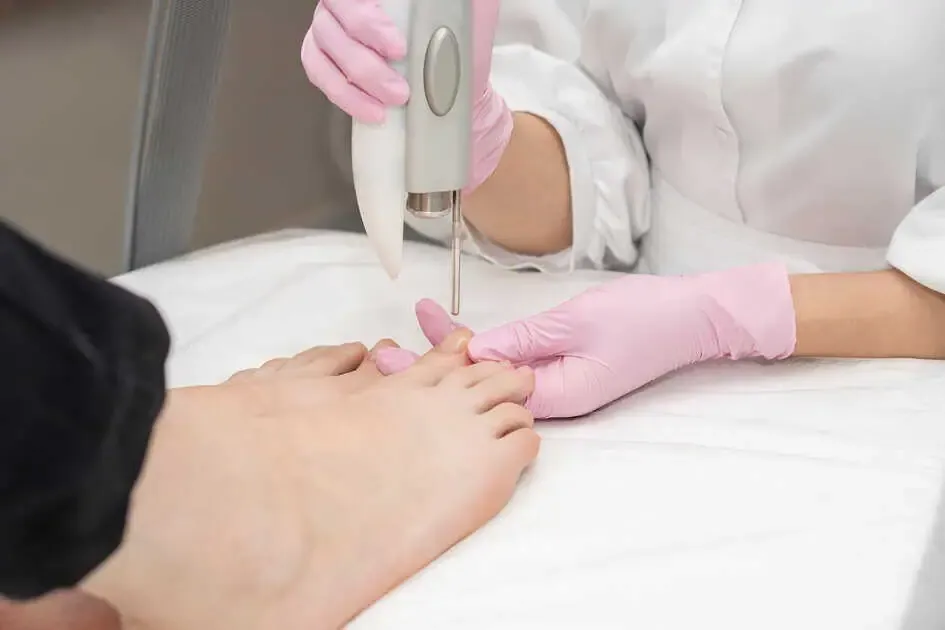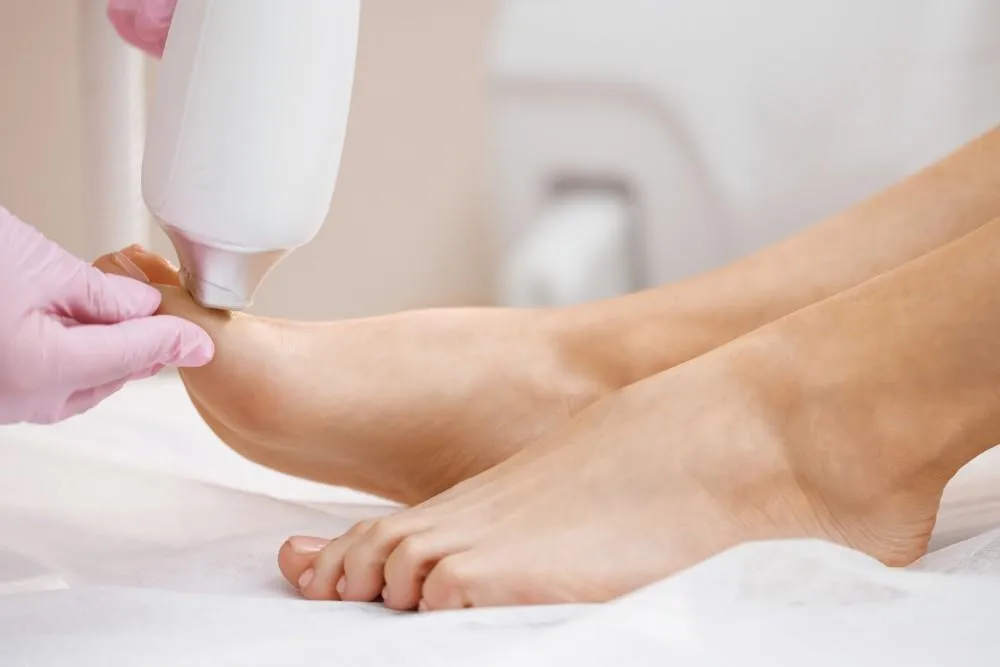Nail Fungus and Laser Treatment, additionally called onychomycosis, is extra than only a cosmetic concern. It's a common infection that impacts thousands and thousands of human beings global, inflicting thickened, discolored, and brittle nails. For many, over-the-counter lotions and prescription medicines don’t offer long-time period remedy. That’s where laser remedy comes into play — a present day answer that’s gaining recognition for its effectiveness and minimum facet consequences.
Nail fungus is a prevalent and obstinate condition that affects hundreds of thousands of people worldwide. The laser treatment for nail fungus is most likely the solution you've been looking for if you've tried creams, ointments, and oral medications without results.
In this blog, we’ll discover what nail fungus is, why it’s so stubborn, and how laser treatment can be a game-changing alternative for the ones seeking to finally kick the fungus for top.
Read Also: Does Nail Polish Remover Help With Armpit Stains?
What Is Nail Fungus?

Nail fungus is a fungal infection that normally starts as a white or yellow spot underneath the tip of your fingernail or toenail. As the infection is going deeper, it could cause the nail to discolor, thicken, and crumble at the edges.
Common Symptoms Include:
Thickened nails
Discoloration (yellow, brown, or white)
Brittle or crumbly texture
Foul smell
Separation of the nail from the Nail Fungus and Laser Treatment
Toenails are extra commonly affected than fingernails because of the warm, wet surroundings interior footwear — an excellent breeding ground for fungus.
Why Is Nail Fungus So Hard to Treat?
- Fungal infections of the nail are notoriously hard to deal with for numerous reasons:
- Slow nail increase makes it more difficult to see progress quickly.
- The fungus resides below the nail, wherein topical treatments frequently can’t attain.
- High recurrence rate, mainly if ft are uncovered to wet environments, gyms, or public showers.
While oral antifungal medications like terbinafine and itraconazole may be effective, they arrive with capability facet outcomes and aren’t appropriate for everyone. That’s where laser remedy gives a promising opportunity.
What Is Laser Treatment for Nail Fungus?
Laser treatment for nail fungus uses centered mild strength to penetrate the nail and spoil the fungus at its source without adverse the surrounding tissue.
How It Works:
- The laser emits pulses of power that warmth and kill the fungus in and across the nail.
- The procedure is non-invasive, requires no anesthesia, and generally has no downtime.
- Most periods take 20–30 minutes and are done in a podiatrist or dermatologist's office.
- Different laser systems can be used, inclusive of Nd:YAG lasers and bloodless lasers, relying at the medical institution and the severity of the contamination.
You May Also Like: The Mixed-Metal Nails Trend Merges Fashion and Beauty
Benefits of Laser Treatment

Laser therapy is taken into consideration an appealing option for treating nail fungus for several motives:
1. High Success Rate
Many studies and real-international cases record seen development after a few classes, specially for moderate to mild infections.
2. No Medication Side Effects
Unlike oral antifungals, laser treatment doesn’t have an effect on the liver or engage with different medications.
3. Minimal Pain
The procedure is commonly ache-unfastened, with most patients reporting handiest a moderate warming sensation.
4. No Recovery Time
You can resume daily activities at once after treatment.
What to Expect During the Procedure?
Before:
Your doctor will trim and in all likelihood report the affected nail.
No special preparation is usually required.
During:
A hand held laser device is directed at the nail and surrounding tissue.
You can also experience a warm or tingling sensation.
The procedure usually takes 20–half-hour.
After:
No downtime; you may stroll out of the clinic and resume ordinary sports.
Your doctor may additionally advocate antifungal sprays or powders to save you reinfection.
Cost of Laser Treatment for Nail Fungus?
Since most insurance companies don't forget it beauty, laser remedy can be expensive:
$500-$1,500 consistent with consultation (varies through health facility)
Package deals (3-four periods) may additionally decrease fees
Is it really worth it? If other remedies have failed, laser therapy offers a drug-free, non-invasive answer with excessive fulfillment fees.
Best At-Home Care After Laser Treatment

- To prevent reinfection and speed up recuperation:
- Keep toes easy and dry (fungus prospers in moisture)
- Use antifungal sprays or powders in footwear
- Wear breathable socks (cotton or moisture-wicking)
- Disinfect nail clippers and files after every use
- Avoid strolling barefoot in public areas
- Recommended Products for Maintenance
- Lamisil (terbinafine) antifungal spray
- Pure & Essential Minerals Fungal Nail Solution (herbal option)
- EmuaidMAX for Nail Fungus (soothes irritation)
Read Also: Blue Christmas Nails Designs: Sparkle and Shine this Holiday Season!
How Many Sessions Are Needed?
The wide variety of periods depends at the severity of the infection and the kind of laser used. Most patients require 2 to 4 treatments spaced some weeks apart. However, full results take time, as wholesome nail increase is a sluggish method — it can take 6 to three hundred and sixty five days for the brand new, fungus-unfastened nail to grow in completely.
Is Laser Treatment Safe?
Yes, laser remedy for nail fungus is considered safe with minimum facet consequences. Some sufferers might enjoy:
Mild redness or swelling
A transient warming sensation all through the technique
There’s no cutting or burning worried, and complications are uncommon while performed by a qualified expert.
How Much Does It Cost?
Laser nail fungus treatment is regularly considered cosmetic, so it could no longer be covered by way of coverge. Prices vary depending on:
The medical institution and area
Number of nails handled
Number of sessions required
Typically, a unmarried session expenses $200–$500, with reductions to be had for multiple treatments or full foot insurance.
Can Nail Fungus Come Back After Laser Treatment?
Unfortunately, yes — as with every treatment, there may be a risk of reinfection. That’s why publish-remedy care is vital.
Tips to Prevent Recurrence:
- Keep your ft dry and easy.
- Wear moisture-wicking socks.
- Use antifungal sprays in footwear.
- Avoid strolling barefoot in public showers or locker rooms.
- Trim nails often and avoid sharing nail clippers.
Alternatives to Laser Treatment

- While laser remedy is effective, it’s no longer the only option. Other treatments consist of:
- Topical antifungal nail lacquers (like ciclopirox)
- Oral antifungal medicines
- Surgical nail removal in intense instances
Discuss with a healthcare provider to determine which treatment or aggregate is right for you.
Final Thoughts
If you’ve been scuffling with nail fungus for months or maybe years with little achievement, laser remedy can be a cutting-edge, effective answer. With minimum facet consequences, no downtime, and promising consequences, it offers a new desire for those handling this continual circumstance.
However, like any treatments, achievement depends on consistent care, hygiene, and realistic expectations. Consult a dermatologist or podiatrist to look if laser remedy is proper for your case.
Frequently Asked Questions
1. Is laser treatment painful?
No! Most sufferers experience most effective slight warmth or tingling.
2. How long until I see outcomes?
Since nails grow slowly, visible development takes three-6 months. Full restoration may additionally take up to a 12 months.
3. Can nail fungus come back after laser treatment?
Yes, if preventive measures aren’t observed. Keep feet dry and avoid reinfection.
